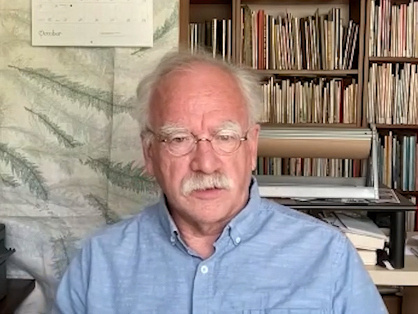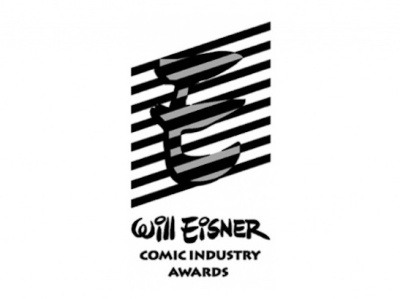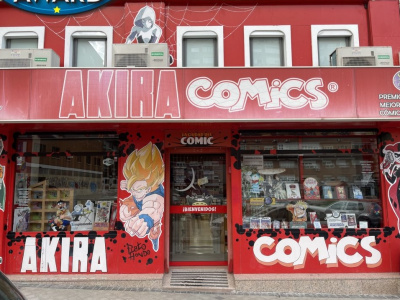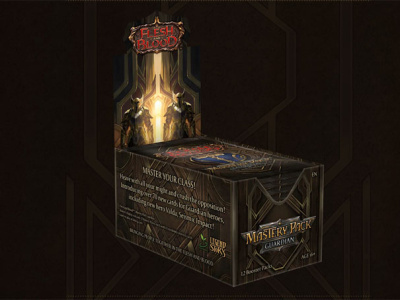For his article on direct market pioneer Bud Plant (see "Bud Plant, a Pioneer"), Dan Gearino (author of The Comic Shop, see "New Edition of ‘Comic Shop’") conducted a meaty video interview with Plant, which you can watch in three parts:
Bud Plant Video Interview, Part 1
Bud Plant Video Interview, Part 2
Bud Plant Video Interview, Part 3
We are also making available full transcripts of the interview, in three parts corresponding to the three parts of the video interview. In Part 2, Plant talks about meeting Phil Seuling, the beginnings of the direct market, and opening the first Comics & Comix store. In Part 1, he talked about the very early days of the comics business in the 1960s, and some of the first comic stores in California. In Part 3, he talks about rapid growth in the 1980s, selling his wholesale business to Diamond, and the meaning of it all.
This interview and article are part of ICv2’s Comics Direct Market 50th Anniversary celebration; for more, see "Comics Direct Market 50th Anniversary."
When did you become aware of Phil Seuling?
That was through Michelle Nolan, who lived just up the peninsula slightly, and was part of the Seven Sons comic shop. She's about four or five years older than I am. She was in college at that point. She had driven back to New York in either '67 or '68 for the first time with a friend. I think she went to see the moon launch in '69 and then went on to New York.
She had somehow gotten in touch with Phil Seuling. Nobody was driving from California to New York to do a comic book show. Michelle was the exception to the rule. She still is, because she's still doing it. She still drives to the East Coast and does shows.
She got to know Phil Seuling and helped him a little bit with the show. Phil would enlist anybody that was willing to help. He had this huge volunteer staff, his high school students, because he was a high school teacher, and he got Michelle to help run security, or something like that. She got to know him, came back, told us about this guy: "He's putting on the show. You got to go to New York. It's a great show." She talked us into it. So in '70, 1970, that was our first trip.
We took Michelle with us, and I bought a van. We went to Oklahoma City, did the show there, and went on to New York and did the show there. I'm setting up at the show selling comics, but spending every penny we made on more comics, or original art, or whatever we were coming across.
Walk me through the moment you meet Phil Seuling. First time you came face to face with this guy.
We had dropped Michelle off on the way to New York because she had this thing, she wanted to visit every state in the United States. We were not going through some, like Arkansas or Mississippi, or something like that, we weren't going through there at the time. So we dropped her off, and she picked up a bus and she said, "I'll meet you in New York." We left her, and we went up to Washington, DC, because she'd been there before and she didn't really care about doing it. We got to Washington DC. We had never been to the East Coast before and we were checking out the Washington Monument and Abe Lincoln Memorial and all that stuff, and it was raining. It was really miserable, and we said, "This is not a lot of fun. Let's just go up to New York early."
We drove straight up to New York and Phil lived right off of Coney Island on the 12th floor of a big apartment building with his wife and his two little girls. We got there late in the evening. We're going, "It's late, but we don't have a place to stay." This is New York. We didn't have money. We would usually sleep in sleeping bags in rest areas. We didn't go into hotels very often.
We came up and listened at Phil's door. We knew where it was. We hadn't called him because we didn't have cell phones. We should have called him, but we didn't. We heard a TV or something on. It was about 10:30 at night. We heard a TV, and I said, "Well, somebody's up," and so we knock on the door. [laughs] Phil comes to the door in white underwear because it's hot. This is July in New York, and it's hot as sin. You open all your windows and hope there's a breeze coming off the ocean. Phil takes a look at us and says, "Oh, you must be the California boys.” We go, "Yeah, we're here."
Of course, he took us in, and we stayed in his apartment. Either there or we stayed at the hotel once the show started because again he was super generous. He was putting Michelle up in his apartment. He'd buy her the breakfast cereal she liked and make sure he had a stock of that. We just slept in his living room and on the kitchen floor and stuff.
There was four of us. I think we went back with five people counting Michelle, but again, nobody else was driving in from the West Coast like that. We were special, and we were coming back to his show and he was just a really outgoing and generous guy. He put us to work…
What was the work? What work did you do?
We became security, and we slept overnight on the floor at the convention to provide security for the dealer's room.
That sounds like a sweet gig, actually. Well, actually, it probably isn't the sweetest of gigs, but just being among the comics and original art that, like 1970, that must have been amazing. It's not like you're going around looking at the stuff, but yeah.
It was, yeah. In '71, those first couple of New York shows were astonishing. Frazetta turns up for the first time at a show and he's selling Johnny Comet dailies for 35 bucks apiece. Artists that we'd seen in comics. They were there at the show. Grey Morrow was walking around. Roy Krenkel’s there. It was just amazing. New York was, that was the show.
Then the young artists were just getting started, Jeff Jones, Vaughn Bode, Barry Windsor‑Smith. They were already a little group of the avant‑garde artists and they were doing little projects of theirs and they would be introducing things at the show. It was incredible. There was a lot to take in.
Of course, I didn't feel like I got as much out of the show as I might have because I was set up being a dealer there. Trying to make my money back for getting there, and then, like I said, turning it into more stuff.
When we left that show, that 1970 show, John and I were, at that point, the only two partners still remaining in Comic World because we’d bought out the other two guys and started Comic World together. We were making deals together as partners. Of course, John was my partner in Comics & Comix when we started up again in '72. We left New York owing Phil 500 bucks. It was like Phil was giving $500 credit to teenagers from California that he just met a week before. That's the kind of guy he was. We just hit it off. I don't know what he saw in us, but he was just that outgoing, gregarious, friendly guy and he saw fellow comic book fanatics. [laughs] Probably, we were like he was when he was younger. I guess he was probably 15 years older, maybe. Probably he was in his mid‑30s. I'd have to go back and place it, but anyway, he was a high school teacher, so he was a guy and that's how he became my mentor because I'm just a kid. I'm 17, 18 little naïve California kid, know nothing about business.
Here's Phil, and he's learning about it too because he's a high school teacher, but he'd already been involved in his store a couple of years before, and he's doing the show, and he's learning on the fly.
You come home, had your horizons just been broadened a lot by that trip? Where you come home and you were just like, "OK, now we're in business." What happened next?
[laughs]We were definitely hooked on doing the shows, but there weren't that many shows at that point. San Diego started about that time, too. I think San Diego started at the end of the summer in 1970, if I have the days right. We went down to that, but that's about it.
We really wanted to do the shows, and we were still actively collecting, but, like I said, we closed up our store just after that at the end of 1970 because I was really nervous. I'd signed up for 18 units in college and I was going to be a physics major. I can't be running the store. John was a journalism major, so we're both real busy, and this store wasn't making a whole lot of money. This was not a highly successful little operation. [laughs] It got us comics. We managed to make it through, but we were just selling used comics. It was a funky little place. It was not really a serious business. That didn't come along until Comics & Comix in '72.
I started going to college and then I suddenly realized that I don't have money. I'd been involved in stores and selling comics and stuff for the last few years. When I wasn't in the store anymore, it was like, "I missed this income." I didn't have a job.
That's when I started the mail order business, and said, "OK, I'm going to start selling underground comics and fanzines and books on comics. I'll start selling through the mail," advertising in the Rocket's Blast and in the Comics Buyer's Guide, which was just starting up at that time. That's how I started my mail‑order business. It was right about that same time.
What year did the mail‑order business start?
Basically late '70, late 1970, or very early 1971.
Was Comics & Comix a separate business from your mail‑order business?
Yeah.
You were a part owner of Comics & Comix, and you were also operating your mail‑order business.
Right, yeah.
You were also going to college?
Yep. In '71 when I went off to the shows again, that year would've been probably Houston and New York, or Dallas and New York. I can't remember what the sequence was, but they were clumped together, so you could do both shows and a trip. I already had started the mail order business. I needed somebody to be filling orders for me, so I got my old partner, John, who didn't go with us because he was busy and he had a girlfriend I think at the time. I said, "Come over to the house, fill orders for me because I can't be holding up customers' orders for the two weeks or two and a half weeks that it takes me to drive east." John ran the business for me. It was summertime.
I think the second time, I came back, the same thing happened. In '72, I was off, I think, I did two sets of runs to the East Coast. There was a second set of shows—Detroit, Chicago, something like that. There was a show in Washington, DC. Anyway, John helped me run the business again. I came back from that trip and John said, "This is a good gig. These guys are sending you money. You're selling these underground comics and making a whopping 25 cents a comic or something." He says, "Why don't we be partners?" I said, "I've already been through two stores and had a lot of partners." I said, "No, I don't know. It's a good gig. I don't really need a partner. I can go to college and do this mail‑order thing on the side." He said, "Why don't we open up a store? But open a store in a good location, not downtown San Jose where there's already two stores."
John and I put our heads together and said, “Let's open up a store in Berkeley on Telegraph Avenue.” Primo, primo area. Right down the street from the UC Berkeley with whatever number of students they had, 25,000, 30,000 students, already bookstores on Telegraph Avenue. It was the hip place.
John was losing his interest in being a journalism major at that point. He was like me, he was more interested in comics than futzing around. I said, "I'm going to keep going to college. I'm not going to drop out," but John said, "I'm going to drop out. Let's open the store." I became the financial backer because of my mail‑order business and I could dump stuff into there, and John became the front man for the store. He was the guy that was driving 60 miles each way to Berkeley, and starting to run the store. Then we brought in Bob Beerbohm and two or three other guys. That's the origins of Comics & Comix.
That's, in hindsight, that's an example of just kind of comics retail leveling up, right? You've done two previous stores. John had also done... Was John a partner in Seven Sons? Was he a partner in both Seven Sons in Comic World?
Both stores. He was partner in both stores. Yeah.
Initially, did Comics & Comix have new comics?
I think pretty quickly yes. Absolutely pretty quickly yes. There was a distributor in Oakland called Gilboys. Yeah, we had to be here in new comics. We weren't going to make it on selling old comics anymore.
Yeah, we went to Gilboy’s and set up an account and started buying comics from the distributor at those miserable discounts, I think they gave you 30% off or something like that. But this is pretty close to where Phil Sueling comes into the picture and starts the direct market. I think we dealt with Gilboy’s first. Do you know when Phil Sueling actually started selling comics?
I don't have the month at the tip of my tongue, but it would have been late '73, really late in '73. I think maybe November. I’d have to double‑check.
Yeah, so that's about right. Probably for the first year or so, we were going to the distributor and doing our best to get all the comics that we needed, which was hard because the distributor wants to give you 10 copies of each comic. Boom, they're done. What we want is 50 copies of Spider‑Man and 25 copies of Fantastic Four, and we don't care about Little Lulu or whatever. We were trying to find a work of the distributor at least for that initial time.
The same distributor was carrying paperbacks, so all of a sudden, we were selling new science fiction paperbacks, too. It was a whole much more serious business operation than the other stores have been.
Again, with the other stores, just give me an idea of what that store was like. Telegraph Avenue, this kind of famous street that was still at the tail end of its heyday, maybe. If I walk in that store, what do I see?
You would have seen racks of new comics. The distributor would provide us with the racks in those days. They gave you these big old wooden racks that you could put magazines and comics on.
We didn't do spinners, because spinners are death on conditions of comics. We didn't touch spinners, except maybe if we were selling quarter comics, or something, we'd throw junk on there that we didn't care about the condition. We got these nice, big wood racks from them. They also would provide you with racks for paperbacks.
We had new comics, big rack of undergrounds. Undergrounds was a huge deal, because we had all these kids going to college, and they were starting to smoke dope. In '72, well, they were starting. [laughs] They'd probably been getting stoned.
There was a whole movement (the whole hippie movement, the psychedelic movement),so the undergrounds played into that. We had all the underground comics. That was a huge part of our business. The Freak Brothers and Zap and stuff. We sold zillions of those things.
We couldn't fill the initial store. The initial store was on the corner of Dwight and Telegraph right in front of a bus stop. We couldn't fill the store. We didn't have enough stuff to put in the store, because we didn't have a lot of capital. Initially, I put about $3,000 worth of stuff into the store and expected to get reimbursed for it at some point.
The back of the store was empty. We used to let people come in with backpacks. They were wandering around, doing their thing. They could crash in the back of the store. Back in those days, you could do it. We were friendly to everybody.
We eventually had to stop that, because guys were leaving kits of—they were shooting up, and stuff, in the bathrooms. Leaving dirty clothes in the back of the place. Their dogs would come in, and poop on the floor. We said, "OK, [laughs] we've learned our lesson. We can't be quite this altruistic."
The one really nice thing was that when they were having the riots in Berkeley in '70...let me think '73 when they were...Everybody was after Bank of America, because they were supporting the Vietnam War. Of course, everybody is anti‑Vietnam at that point. We had all barely escaped the draft ourselves.
When they were out breaking windows and making a mess on Telegraph Avenue, I wasn't there at the time, but the story is that we had customers who were out in front of our store saying, "No, [laughs] don't throw a rock through the window of this store. These guys are cool. They're just young." We were 21, 22 years old at that point. We're just kids trying to run a nice, little hippie shop. We were carrying underground newspapers. The Berkeley Barb and San Jose Red Eye, and whatever what's coming out at the time. We were a pretty hip place to go.
How often were you at the store? How active of presence were you?
Not often. That was the big joke is that I was running the mail‑order business, and getting a name through comics fandom, through the advertising and the fanzines, and stuff, and going to shows. I would advertise the stores. People would walk in and expect to see me behind the counter. I was in San Jose going to college. They finally came up with a little button that said, “I am not Bud Plant,” as a joke. So many people, they'd see John, or they'd see one of the other guys, and go, "Are you Bud Plant? Are you Bud Plant?" [laughs] I was developing a name even early on like that in the comic book thing.
I literally did not work behind the counter. I couldn't have run the cash register if you asked me to. I was pretty much off the scenes. I was still doing the mail‑order business, and growing that, and the wholesaling stuff, and that early direct market thing, and still going to college as much as I could. I was doing that until '75 when I graduated from college.
Walk me through how you became a distributor. Some of those early steps where your customers were businesses as opposed to individual collectors.
A lot of these guys didn't have the contacts for, say, fanzines or undergrounds, because they're somewhere else. They're not in the Bay Area. I started having people contact me through my ads, and saying, "Hey, I've got a store in x location."
Even overseas, I started doing a lot of business with overseas people. They saw my ads for stuff, and they said, "Here's a source for the material." I said, "Sure, yeah, I can do that." I'll discount these things at 40% off or something. I'll buy the undergrounds, and I was shipping stuff to Amsterdam and to South Africa.
Benedikt Taschen, Taschen Publishing, he actually had a comic store in Munich and he was a big customer. Back in '74, '75, '76, he used to send me $4,000 or $5,000 orders for stuff, and I'd ship all this stuff to him. That's basically how it started.
I wasn't out there advertising wholesale to speak of, because my business was still primarily retail, but these guys would contact me and I said, "Well, why not?" I can sell $100 worth of stuff and give them a discount and everybody's happy.
I was there in the Bay Area, right where the undergrounds were being published, so that was super convenient. I didn't have shipping costs or anything. I would just drive up to San Francisco, buy a bunch of boxes of the new comics, bring them back, and have them available to start shipping them out to people.
Same thing on fanzines. Phil and I would work together on fanzines. Something like Squa Tront would come out or Panels or the early Voice of Comicdom. We’d sometimes buy a big bunch of them, sort of support the publisher, and then we'd be the two distributors for it. Then people would come to us to get wholesale copies.
Was this all under the auspices of the mail‑order business? Was this in terms of an entity, just one company that just happened to do these different kinds of things?
Yeah, exactly. That's the thing. I didn't name the business because it was just me. I'm just a guy on the Rocket's Blast and the Buyer's Guide. Mostly, we were just a bunch of fanboys selling stuff. I'm Bud Plant in San Jose, and people would go, "That's a weird name, but he fills the orders." That's why I never got a real name for my business.
By the time I thought about having a cool name like Cosmic Aeroplane or Million‑Year Picnic, it was too late. I was always already really well known as Bud Plant. He's the guy that shows up at shows. They said, "No, just keep the name." That's what I've done. It's a catchy name. People remember it, especially once I moved to Grass Valley, then they really remembered it.
What year did you move to Grass Valley?
In '75.
Click here for Part 3.
This interview and article are part of ICv2’s Comics Direct Market 50th Anniversary celebration; for more, see "Comics Direct Market 50th Anniversary."
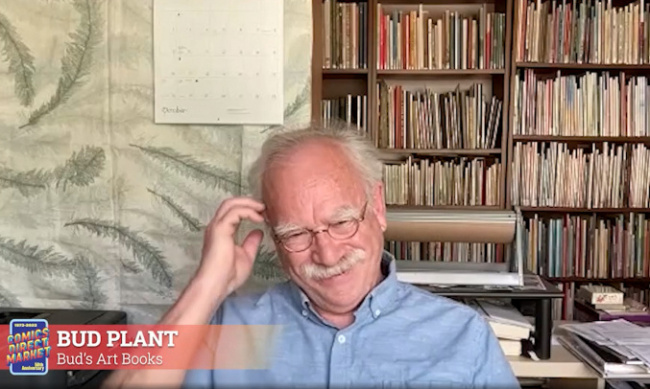
Meeting Phil Seuling, the Beginnings of the Direct Market, the First Comics & Comix
Posted by Dan Gearino on May 26, 2023 @ 6:16 am CT
MORE COMICS
Also: Longtime Eisner Awards Administrator Jackie Estrada to Retire
July 26, 2025
Jackie Estrada, who has been running the awards since 1990, is stepping down.
Second Win for Akira Comics
July 26, 2025
Akira Comics previously won the award in 2012.
MORE NEWS
Shop Talk, July 2025
July 25, 2025
All this and more in this month's edition of Shop Talk, our roundup of retailer news.
Supplementary Booster Set for the Guardian Class
July 25, 2025
Legend Story Studios will release Mastery Pack Guardian, a supplementary booster set for Flesh and Blood TCG, into retail.



